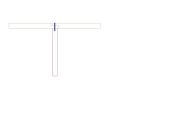posted 4 years ago
Hello,
I am Alex and I have worked a land surveyor, on civil and cadastral Projects. Working to accurately define and evaluate ownership of land to return it to aboriginal peoples, Large rail ways, Skyscrapers, Race tracks, Bridges, Mines, classified, harbour works, waste facilities, historic restoration, harbour works, Tidal surveys, erosion, GIS, Ecology, sewer, storm water, National level infrastructure, drones, lidar, Broad acres, Photogrammetry, monitoring, Work that is recorded for centuries, grave and body locating.
I learnt everything is an opportunity to learn!
I am highly skilled as strategy, innovation, analysis.
I am also a skilled engineer, mason, carpenter, poet, smith, landscaper, hunter, logician,
Will experience, in chemistry, astronomy, physics, biology, anatomy, plumbing, welding, electrical work, programming, phycology, survivalist, agronomy, forestry,
I am developing skills in business, leadership, communication,
I plan on leaving surveying to pursue something else, I want to work on creating a new industry of ethical system analysts, who can see how a system is discriminatory and make minor changes to significantly improve the system.
as well I would like to work on reducing animal fragmentation and denitrifying the desserts of Australia!
With my surveying experience, I have an extreme diversity of areas which I have seen, I do not believe that landslides should be happening, dust storms need not happen either, nor people dying of asthmatic attacks because of them, nor should animals be endangered because of lack of consideration of animal migration in human infrastructure, So many people can not get degrees because of discrimination, victimising practices, even next of kin, so a person who is a alone can not be employed because of a form, or aspects of consumer rights being overburdensome for the aggrieved person to use, Education, transport, employment, technology. If these aspects could be tweaked just a small amount to improve them, the effect on society would be exponential and benefit the 99.9% in some way direct or indirect.
I can not do it alone, I need support from other people and I need to network and develop, opportunities to start small and do one thing so I can grow and develop my skills in doing so.
I need to grow and learn and experience more so I can achieve it!
I am currently trying to work on one thing a day to grow and get to that level! as well as spending 4-6 hours each day learning, and trying to only take minor breaks from not working on something to do things like permies, or eating, I also spend 1 hour a day, improving my life efficiency so that I may achieve everything faster to get more time to develope myself and my Ideas!

 1
1





 3
3





 5
5




 1
1




 3
3




 1
1







